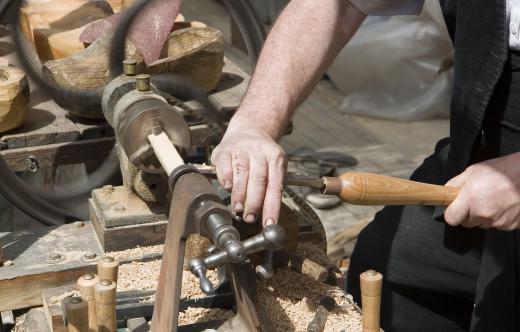A skew chisel is defined as a tool that can slice clean shavings from work being done, most often in the process of wood churning. Such chisels can also cut beads and create sharp edges. They are an essential tool in wood turning.
Wood turning, otherwise known as spindle turning or centerwork, involves placing a piece a wood on a lathe with the wood grain running parallel with the lathe. This art has been performed for many years throughout history. Historically and still today, wood turning is used to create certain elements for pieces of furniture such as newel posts, chair legs, bedposts and rails. Skew chisels are used to perform several important functions during this wood turning process.

Most skew chisels are made with a wooden handle and a stainless steel blade. There are many types and sizes of skew chisels, including the flat sided skew chisel, an oval skew chisel and a rounded skew chisel. Each is used to create different types of cuts.
In addition to different types of skew chisels, there are also different sizes of each available, ranging from 1/2 an inch (1.27 cm) to 1 inch (2.54 centimeters). The size and type of cut you want will be the main determination in deciding which type and size skew chisel you should use. The names of the types of cuts most commonly used are planing cut, peeling cut, scraping cut, slicing cut and V cut.
A planing cut is the one commonly used for the creation of a smooth surface. A peeling cut is used to remove wood from the surface of the piece of wood being worked with. The scraping cut is performed in a similar manner to the peeling cut but with less pressure applied as to not remove as much of the wood.
In a slicing cut, as the wood turns, the skew chisel is turned on its side and held against the wood to create an actual deep slice in the wood. The V cut is created in the same way as the slicing cut, but the chisel is used in a different way. Rather than being held straight against the wood as it spins, the chisel is held at an angle. An angle is cut in from the left and then cut in from the right to create a slice in the wood, similar to a slicing cut, but in the shape of a V.
